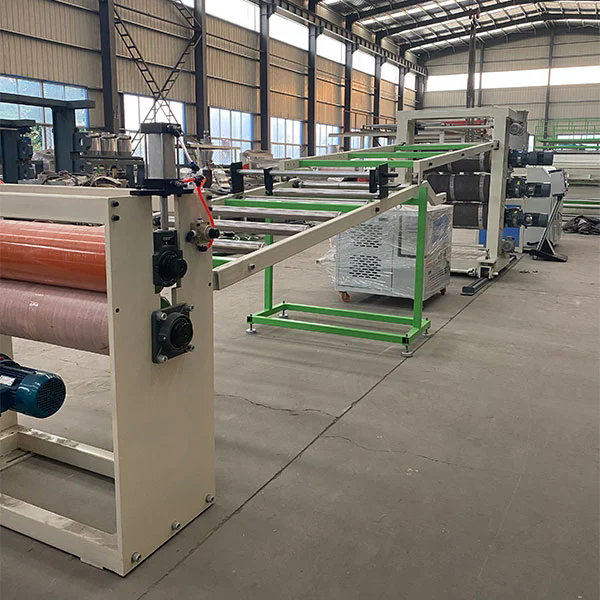How Do Plastic Sheet Extruder Machines Revolutionize Modern Manufacturing?
2025-08-05
In the dynamic world of manufacturing, where precision and productivity reign supreme, the tools that shape raw materials into essential products often define industry standards. Plastic sheets, with their ubiquitous presence in packaging, construction, automotive, and medical sectors, are no exception. For decades, manufacturers grappled with inefficiencies in producing these sheets—from uneven thicknesses that compromised product integrity to excessive material waste that eroded profit margins. Enter plastic sheet extruder machines: specialized equipment that has redefined the production paradigm. These machines don’t just produce plastic sheets; they do so with unprecedented consistency, speed, and adaptability, making them indispensable in today’s competitive market. But how exactly do these machines transform raw plastic pellets into high-quality sheets, and what makes their functionality a game-changer for manufacturers worldwide? This guide unpacks the mechanics, benefits, and real-world impact of plastic sheet extruder machines, offering a comprehensive look at why they’ve become the backbone of modern plastic sheet production.
Trending News Headlines: Top Stories on Plastic Sheet Extruder Machines
- "Plastic Sheet Extruders Boost Packaging Output by 40% Amid E-Commerce Boom"
- "Recycled Plastic Sheets Now Viable for Food Packaging, Thanks to Advanced Extruders"
- "Energy-Efficient Extruders Cut Plastic Sheet Production Costs by 25%"
What Are Plastic Sheet Extruder Machines and How Do They Work?
Key Advantages of Plastic Sheet Extruder Machines
Superior Sheet Consistency
In industries like medical packaging or electronics, even minor variations in sheet thickness can compromise performance—for example, a thin spot in a sterile packaging sheet could lead to contamination. Plastic sheet extruder machines eliminate such risks through their precise control systems. The combination of calibrated heating zones, adjustable die lips, and uniform cooling ensures that every meter of sheet has consistent thickness, density, and surface finish. This reliability reduces scrap rates and eliminates the need for costly post-production inspections, saving manufacturers both time and money.
High Throughput for Mass Production
In today’s fast-paced market, the ability to scale production quickly is a competitive edge. Plastic sheet extruder machines deliver on this front, with production speeds ranging from 10 to 50 meters per minute, depending on the material and sheet thickness. High-capacity models, like our industrial-grade systems, can reach speeds of 60+ meters per minute, enabling manufacturers to fulfill large orders in tight deadlines. This throughput is particularly valuable for sectors like e-commerce packaging, where demand spikes during peak seasons, and delays can result in lost business.
Reduced Waste and Lower Costs
Material waste is a significant expense in plastic production, but plastic sheet extruder machines minimize this through efficient design. Their precise dosing systems ensure that only the necessary amount of plastic is used, reducing over-extrusion. Additionally, many machines—including ours—feature in-line recycling systems that collect and reprocess trim edges and off-cuts, feeding them back into the production cycle. This not only cuts waste by up to 30% but also lowers raw material costs, as recycled plastic is often cheaper than virgin resin. Over time, these savings translate to a substantial return on investment.
Versatility Across Materials and Applications
One of the most compelling benefits of plastic sheet extruder machines is their ability to handle a wide range of materials, from common resins like PP and PVC to specialized ones like PEEK (used in medical devices) and ABS (for automotive parts). They can produce sheets with varying properties: rigid sheets for construction panels, flexible sheets for food wrapping, or anti-static sheets for electronics packaging. This versatility allows manufacturers to diversify their product lines without investing in multiple machines, making it easier to adapt to market trends.
Support for Sustainable Practices
Our Plastic Sheet Extruder Machine Specifications
|
Parameter
|
Specification
|
|
Production Speed
|
15 – 50 meters per minute (adjustable based on material and thickness)
|
|
Sheet Thickness Range
|
0.2mm – 10mm
|
|
Sheet Width Range
|
500mm – 1500mm
|
|
Material Compatibility
|
PET, PP, PE, PVC, PS, ABS, and recycled blends
|
|
Screw Diameter
|
150mm
|
|
Screw Speed
|
15 – 80 rpm
|
|
Heating Zones
|
6 zones (barrel) + 3 zones (die)
|
|
Temperature Range
|
160°C – 300°C (material-specific adjustments)
|
|
Power Supply
|
380V, 3-phase, 50/60Hz (customizable)
|
|
Total Power Consumption
|
120 kW
|
|
Cooling System
|
Water-cooled with temperature feedback control
|
|
Control System
|
PLC with 17-inch touchscreen; stores 200+ production recipes
|
|
Machine Dimensions
|
10000 × 2500 × 3000 mm (L × W × H)
|
|
Weight
|
15000 kg
|
|
Safety Features
|
Emergency stops, thermal overload protection, CE/ISO certification
|
FAQ: Common Questions About Plastic Sheet Extruder Machines
Q: How does a plastic sheet extruder machine handle different sheet textures, such as matte or glossy finishes?
Q: Can plastic sheet extruder machines produce sheets with multiple layers (co-extruded sheets), and what are the benefits of such sheets?
A: Yes, advanced plastic sheet extruder machines—including our ES-1500 when equipped with a co-extrusion module—can produce multi-layer sheets. This process involves merging two or more molten plastic streams (of the same or different materials) in the die, creating a single sheet with distinct layers. Benefits include enhanced functionality: for example, a food packaging sheet might have an inner layer of heat-sealable PE and an outer layer of barrier PET to prevent moisture and oxygen ingress. Multi-layer sheets also allow for cost optimization, as expensive specialty materials (like UV-resistant polymers) can be used in thin outer layers while cheaper resins form the core. Our co-extrusion system supports up to 5 layers, with precise control over each layer’s thickness, enabling endless customization.



